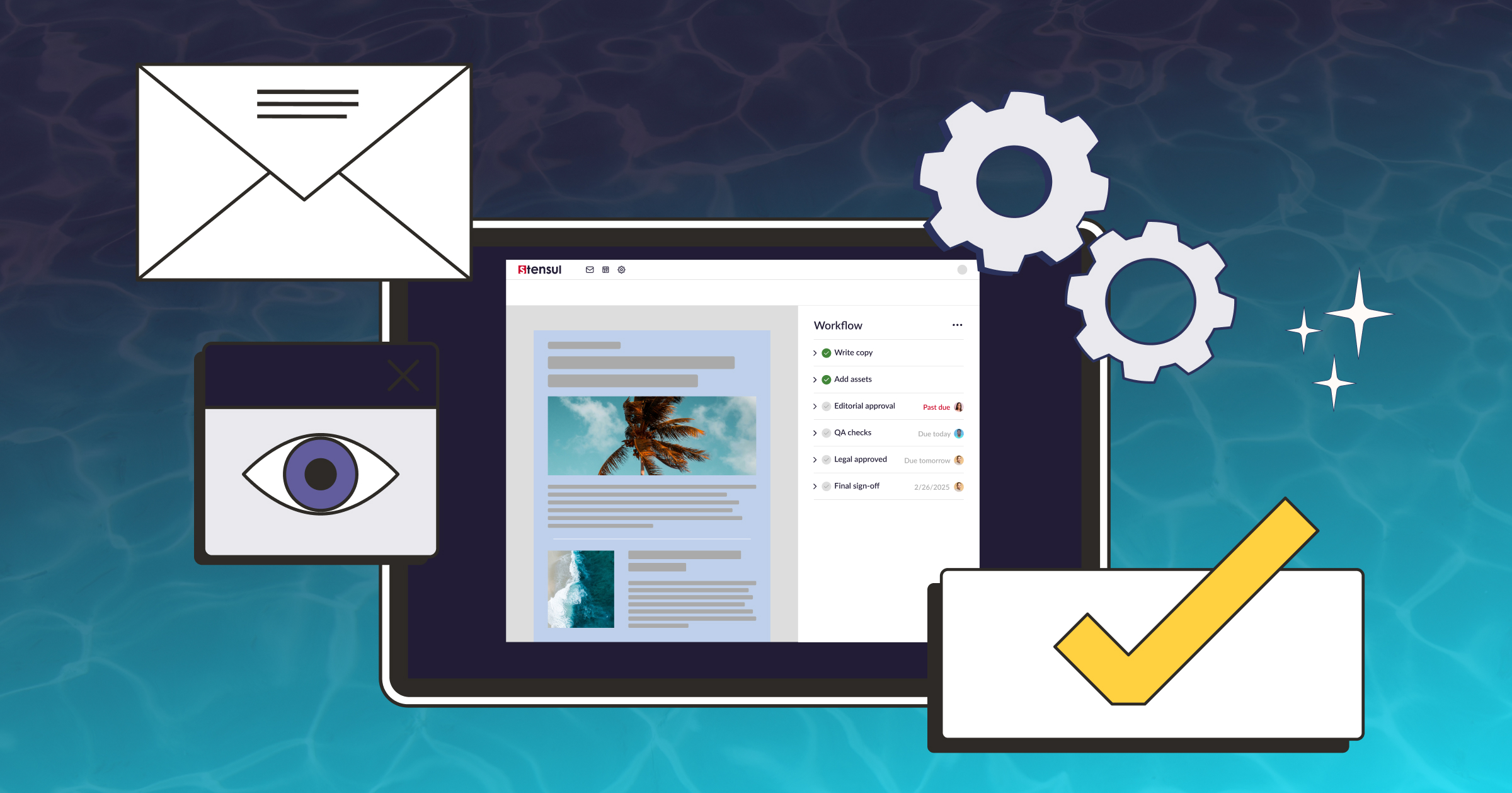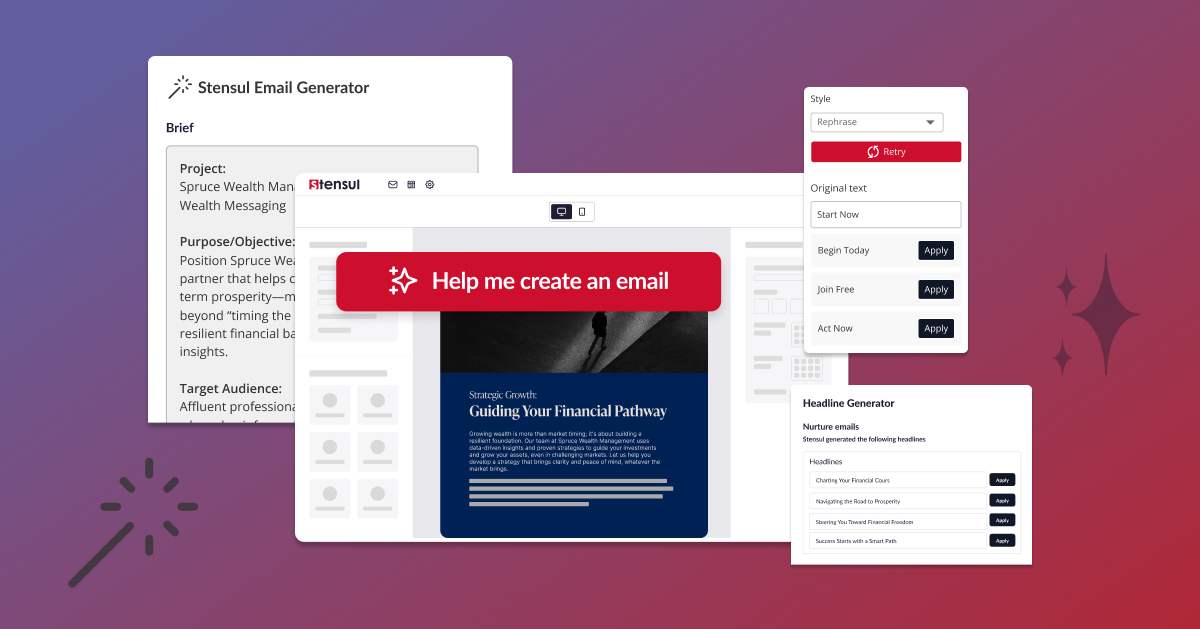Email creation is a complicated process. In all likelihood, it takes more time and money than you’d like. Don’t feel too bad about that. Around 80% of all brands take more than one week to create just one email. That’s one of the key findings of research recently conducted by Stensul.
We surveyed people just like you to better understand how they were creating emails. Respondents included designers, developers, marketers, and marketing operations managers as well as those who work to make certain the emails their organizations are creating are compliant with company branding guidelines and appropriate regulations.
Interestingly, these email marketing pros, from a range of industries and types of companies, were doing things that were costing them lots of time and money in creating emails. In the course of our investigation we found there are 10 things you and your team creating emails might be doing wrong that cost plenty of time and money. By correcting those errors you can reallocate that time and money to activities that improve the efficiency of the email creation process and the effectiveness of the emails themselves.
Read on to learn the 10 mistakes you and other marketers might be making when creating emails.
1. Initiating an email creation effort without having clear, measurable objectives in place.
If you have no idea what you’re shooting for, how will you know if you’ve hit the target? It’s as simple as that. Yet many creators do not set goals before creating the email. Some suggest that because email has shown itself to be a strong performer, time and again providing an ROI around 40%, objective setting isn’t always necessary. Yes, email works, but it works best when you define performance parameters.
2. Starting to create emails without all involved being on the same page.
Any process without a plan is headed for disaster. In email that plan is called an email brief. It’s a document that spells out—for each team member—where to go, how to get there, and what to do if anyone gets lost. If you wonder what constitutes an effective email brief, check out the Stensul eBook, 6 keys to an effective email brief.
3. Not knowing what team members are doing or making the progress they should.
The typical way an email is created is susceptible to bottlenecks that slow down the process and increase the cost. But with visibility into the process—from the email request to deployment to an ESP/MAP—you can prevent minor slowdowns from becoming massive shutdowns. To get an end-to-end view, consider using an email creation platform to create your emails.
4. Creating emails in a way that inhibits collaboration and prevents optimum efficiency and performance.
Most emails are created by disconnected team members using single-purpose tools. That’s fundamentally why emails are so difficult to create. This approach produces lots of unnecessary and avoidable back-and-forth, eating up valuable time and money. Using a collaborative email creation platform changes all that. Creating emails this way is simpler and faster, yielding content that’s more engaging so your email yields stronger results.
5. Not having enough time to test to provide a better subscriber experience.
More than 75% of respondents to our survey said they have little time to invest in high-value strategic initiatives like analyzing performance to make better use of deployment platforms. Chances are your time is also taken up by often-manual email creation activities and lengthy, asynchronous, and unproductive review and approval procedures. An email creation platform cuts creation time allocation from weeks to days, and days to hours, giving you the time needed to make your emails perform even better with A/B testing and other refinements.
6. Being uncertain about the branding or regulatory compliance of every email created.
If your organization is creating emails the way most do, there’s no certainty whether the result is on-brand emails. An email creation platform with robust guardrails ensures emails use only the latest branding as well as the latest regulatory information every single time.
7. Finding the emails you create don’t check off all the boxes for accessibility.
The American with Disabilities Act (ADA) is a law that requires businesses not discriminate against any person with a disability, including vision impairment. There are steps you must take to ensure an email’s text, design, and technology work for vision-challenged subscribers. An email creation platform lets you be certain your emails comply with ADA requirements for accessibility.
8. Not having a process to ensure what has to be fixed is, in fact, fixed.
Research found that QA issues relating to design, rendering, and tracking need to be re-addressed 8 out of 10 times because they weren’t avoided or solved the first time. An email creation platform brings QA upstream to significantly reduce issues from happening in the first place or make them easy to handle in the unlikely event they occur.
9. Integrating your email creation process only with ESPs/MAPs.
By not linking to other elements or layers of your marketing automation stack—like workflows, image libraries, link tracking or messaging platform—the email creation process takes more time while raising the potential for bad things to happen to good emails. An email creation platform brings everything together to further simplify and streamline the entire process, especially when it integrates with other parts of a martech stack.
10. Being unable to handle increases in email volume growth.
Everyone in your organization wants to use email because it’s an effective marketing and/or communications channel. That means you have to be able to scale to meet volume increases in a way that meets requesters’ needs on timing, without adding staff or sacrificing quality. An email creation platform lets you do so with ease.
The way to avoid these 10 costly mistakes is to put an email creation platform at the center of your email creation process. To see the Stensul Email Creation Platform™ in action, click here.




